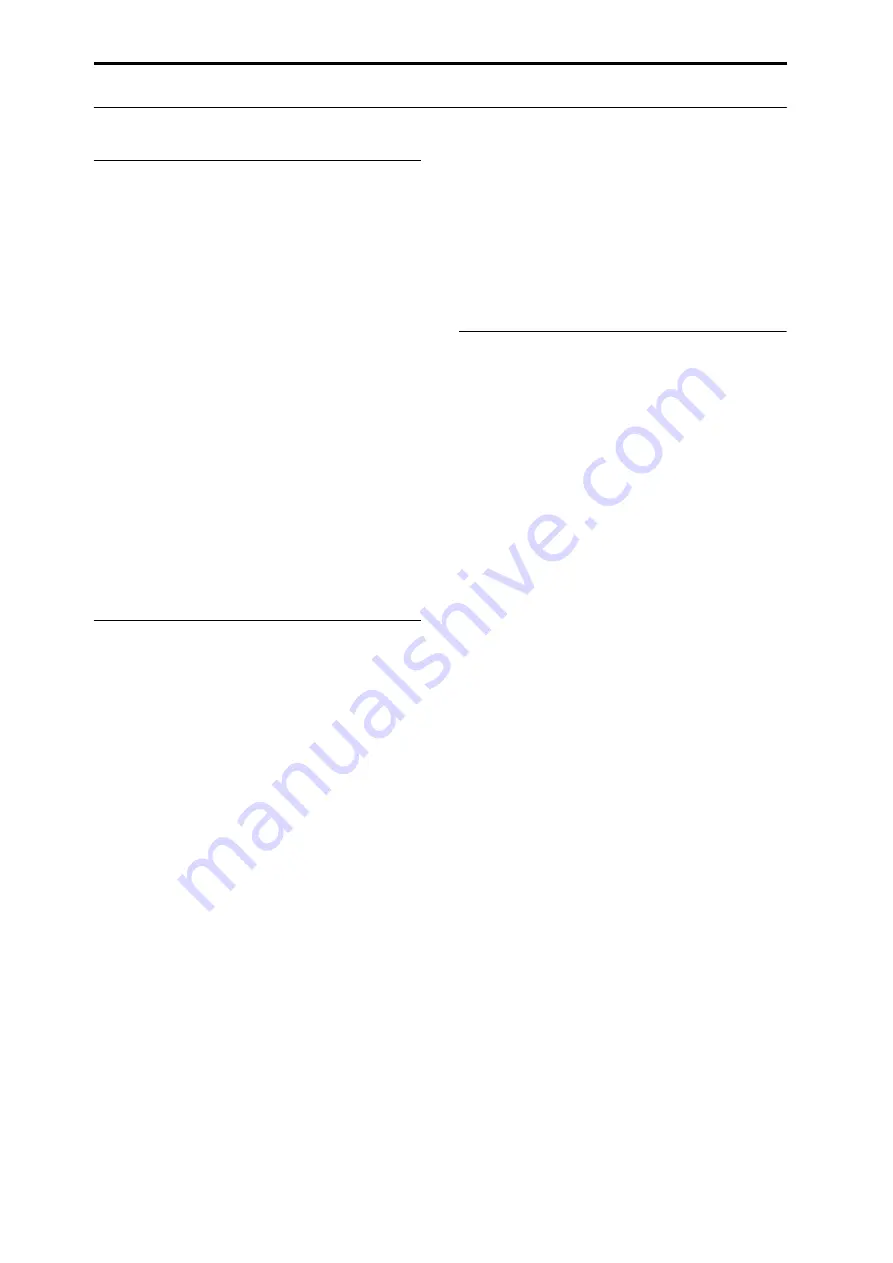
Playing sounds
En-
20
Using KARMA
Turning KARMA on and off
To
turn
KARMA
on
and
off:
1. Press
the
KARMA
ON/OFF
switch,
so
that
the
LED
is
lit.
When
the
LED
is
lit,
KARMA
is
on.
2. Press
a
key,
and
KARMA
will
begin
to
play.
(Note
that
in
some
sounds,
KARMA
may
be
set
to
respond
only
to
notes
played
in
a
specific
keyboard
range.)
Note
the
front
‐
panel
LATCH
switch.
This
switch
controls
whether
or
not
KARMA
continues
to
play
after
you
remove
your
hand
from
the
keyboard.
If
the
LED
is
lit,
Latch
is
on.
KARMA
will
continue
to
play
even
after
you
remove
your
hand
from
the
keyboard.
If
the
LED
is
dark,
Latch
is
off;
KARMA
will
stop
when
you
remove
your
hand
from
the
keyboard.
Link to Drum Track
If
the
front
panel
LINKED
LED
and
KARMA
ON/OFF
switches
are
lit,
KARMA
will
start
and
stop
together
with
the
Drum
Track.
Importantly,
KARMA
will
not
start
if
the
Drum
Track
is
not
turned
on.
For
more
information,
see
Using the KARMA controllers
All
factory
sounds
are
set
up
for
use
with
KARMA.
Some
are
stored
with
KARMA
on
by
default,
and
others
are
stored
with
KARMA
off,
as
shown
by
the
LED
on
the
KARMA
ON/OFF
switch.
1. Press
the
PROG
button
to
enter
Program
mode.
2. Select
a
sound
that
you
like,
and
press
the
KARMA
ON/OFF
button
to
turn
on
KARMA.
The
button
will
light
up.
3. Press
the
RT
KNOBS/KARMA
button
under
CONTROL
ASSIGN.
When
this
button
is
lit,
the
Control
Surface
sliders
and
switches
will
control
KARMA.
4. Go
to
the
Control
Surface
page.
This
shows
all
of
the
assignments
and
current
values
for
the
sliders,
knobs,
and
buttons.
The
sliders
and
the
lower
row
of
buttons
are
the
KARMA
Sliders
and
Switches.
These
control
parameters
within
KARMA,
which
will
vary
depending
on
the
Program.
The
upper
row
of
buttons
select
KARMA
Scenes,
which
store
values
for
the
KARMA
Sliders
and
Switches.
5. Press
the
upper
row
of
buttons,
one
by
one,
to
select
different
KARMA
Scenes.
Notice
how
this
also
changes
the
KARMA
SWITCH
and
KARMA
SLIDER
values,
as
shown
in
the
display.
You
can
move
between
entirely
different
settings
of
all
these
controls
simply
by
pressing
a
KARMA
SCENE
switch.
Each
scene
independently
remembers
any
edits
that
you
make
via
the
sliders
and
switches.
Edits
to
all
8
scenes
are
stored
when
you
write
the
Program.
6. Move
the
sliders
and
press
the
bottom
row
of
switches,
and
listen
to
the
effect
that
they
have
on
the
sound.
The
sliders
and
switches
will
control
different
things
depending
on
the
current
Program
and
its
KARMA
settings.
Using KARMA in Combination mode
KARMA
uses
“modules”
to
generate
phrases
or
patterns.
Programs
can
use
a
single
KARMA
module,
but
Combinations
can
use
up
to
four
simultaneously.
Each
module
can
play
a
separate
sound
(or
group
of
sounds)
if
desired.
Modules
are
routed
to
different
sounds
via
the
module’s
MIDI
input
and
output
channels.
1. Use
the
front
panel
MODULE
CONTROL
switch
to
select
the
module
that
you
want
to
control.
Select
MASTER
to
control
all
four
KARMA
modules
simultaneously.
Select
A–D
to
control
the
individual
KARMA
modules.
2. Move
and
press
the
KARMA
sliders
and
switches.
The
sliders
and
switches
will
control
the
pattern
or
phrase
generated
by
the
selected
module.
Playing chords with the Pads
The
KRONOS
includes
8
virtual
“pads,”
which
can
be
played
by
touching
the
screen,
from
MIDI
input,
or
from
compatible
USB
MIDI
pad
devices.
You
can
use
these
Pads
to
trigger
chords
for
KARMA.
To
play
the
pads
from
the
screen:
1. Press
the
EQ/Vector/Control
tab,
and
then
select
the
Pads
tab.
This
takes
you
to
the
Pads
page.
2. Make
sure
that
the
on
‐
screen
Enable
Pad
Play
button
is
lit.
3. Touch
the
pads
to
play
their
chords.
Dynamics
are
controlled
by
where
you
touch
the
pad;
touch
higher
for
louder,
and
lower
for
softer.
You
can
also
play
the
pads
using
Korg
USB
MIDI
controllers
equipped
with
drum
pads,
including
the
nanoPAD
and
nanoPAD2,
padKONTROL,
microKONTROL,
and
KONTROL49.
To
use
any
of
these
Korg
controllers,
simply
connect
them
to
one
of
the
KRONOS’s
two
USB
A
ports.
The
KRONOS
will
automatically
determine
the
MIDI
assignments
of
the
controller’s
pads
1
‐
8,
and
map
them
directly
to
the
KRONOS
pads.
For
more
details,
see
in
the
Appendix
of
the
Parameter
Guide.
























